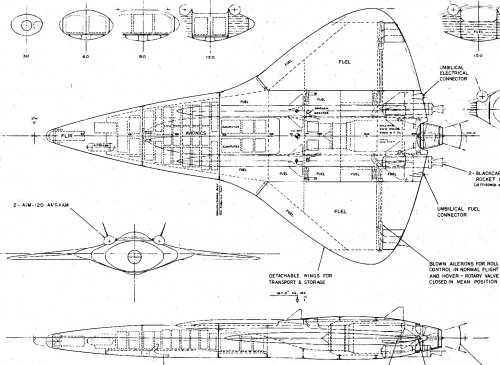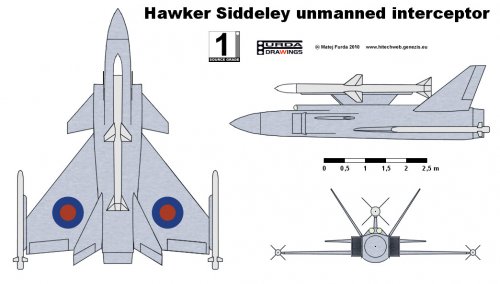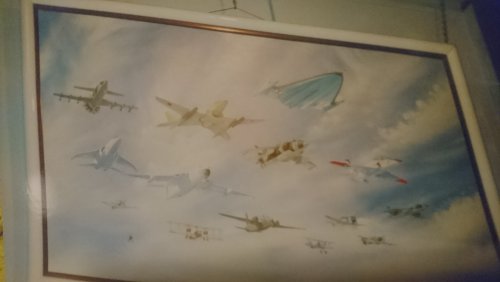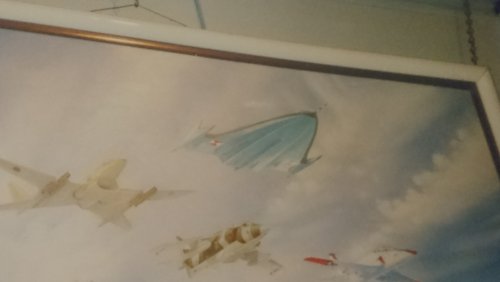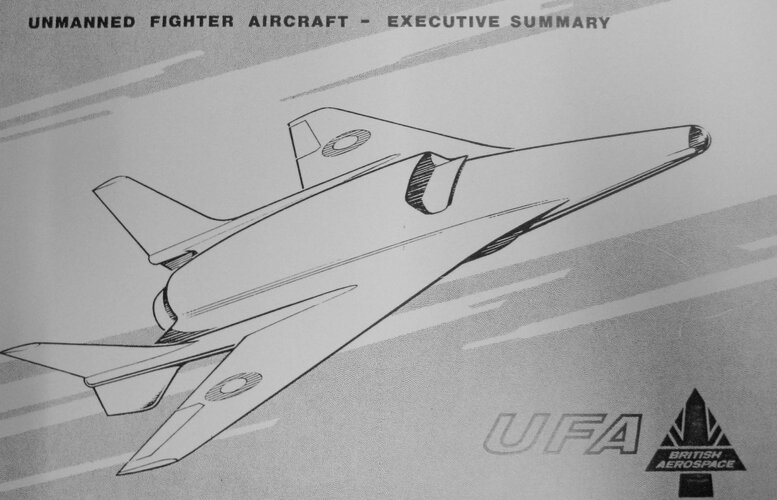Tuomasn
ACCESS: Secret
- Joined
- 5 January 2006
- Messages
- 467
- Reaction score
- 295
Hawker Siddeley Dynamics designed an unmanned interceptor in the early 1970s. The small canard delta wing aircraft was powered by a Rolls-Royce Spey turbofan, equipped with an air intercept radar, and armed with a single Sky Flash AAM and two AIM-9C or SRAAM AAMs. The drone would be launched under command guidance and be controlled by a pilot on the ground via a TV camera and a two-way data link.
P.1224
The concept was revived in the 1980s as the Unmanned Fighter Aircraft (UFA). The idea was to intercept the first wave of enemy aircraft, preserving manned NATO fighters for later on in the battle. Various configurations were studied in 1983-1987, the aircraft being powered by one Rolls-Royce Viper, Adour or Spey or General Electric J85 engine and armed with two AMRAAM and two ASRAAM missiles. The drone was ramp-launched from an articulated truck containing also the guidance system with tail-sitting recovery.
P.1239-5
One variant of the P.1239 "Versatile SABA" studies in 1987 was an Unmanned Fighter Aircraft armed with two S225X AAMs in internal bays.
P.1243
One variant of the P.1224 studies was re-numbered as the P.1243 in 1988. The aircraft was a tailless delta powered by one Williams turbofan engine. It may have included some LO features.
Any further information is appreciated, especially the picture of the P.1224 that was apparently posted by Deino to the Key Publishing thread on the subject (see below).
Sources:
British Secret Projects vol.3 by Chris Gibson & Tony Buttler, p. 75 and 86.
P.1224
The concept was revived in the 1980s as the Unmanned Fighter Aircraft (UFA). The idea was to intercept the first wave of enemy aircraft, preserving manned NATO fighters for later on in the battle. Various configurations were studied in 1983-1987, the aircraft being powered by one Rolls-Royce Viper, Adour or Spey or General Electric J85 engine and armed with two AMRAAM and two ASRAAM missiles. The drone was ramp-launched from an articulated truck containing also the guidance system with tail-sitting recovery.
P.1239-5
One variant of the P.1239 "Versatile SABA" studies in 1987 was an Unmanned Fighter Aircraft armed with two S225X AAMs in internal bays.
P.1243
One variant of the P.1224 studies was re-numbered as the P.1243 in 1988. The aircraft was a tailless delta powered by one Williams turbofan engine. It may have included some LO features.
Any further information is appreciated, especially the picture of the P.1224 that was apparently posted by Deino to the Key Publishing thread on the subject (see below).
Sources:
British Secret Projects vol.3 by Chris Gibson & Tony Buttler, p. 75 and 86.
Last edited by a moderator:

